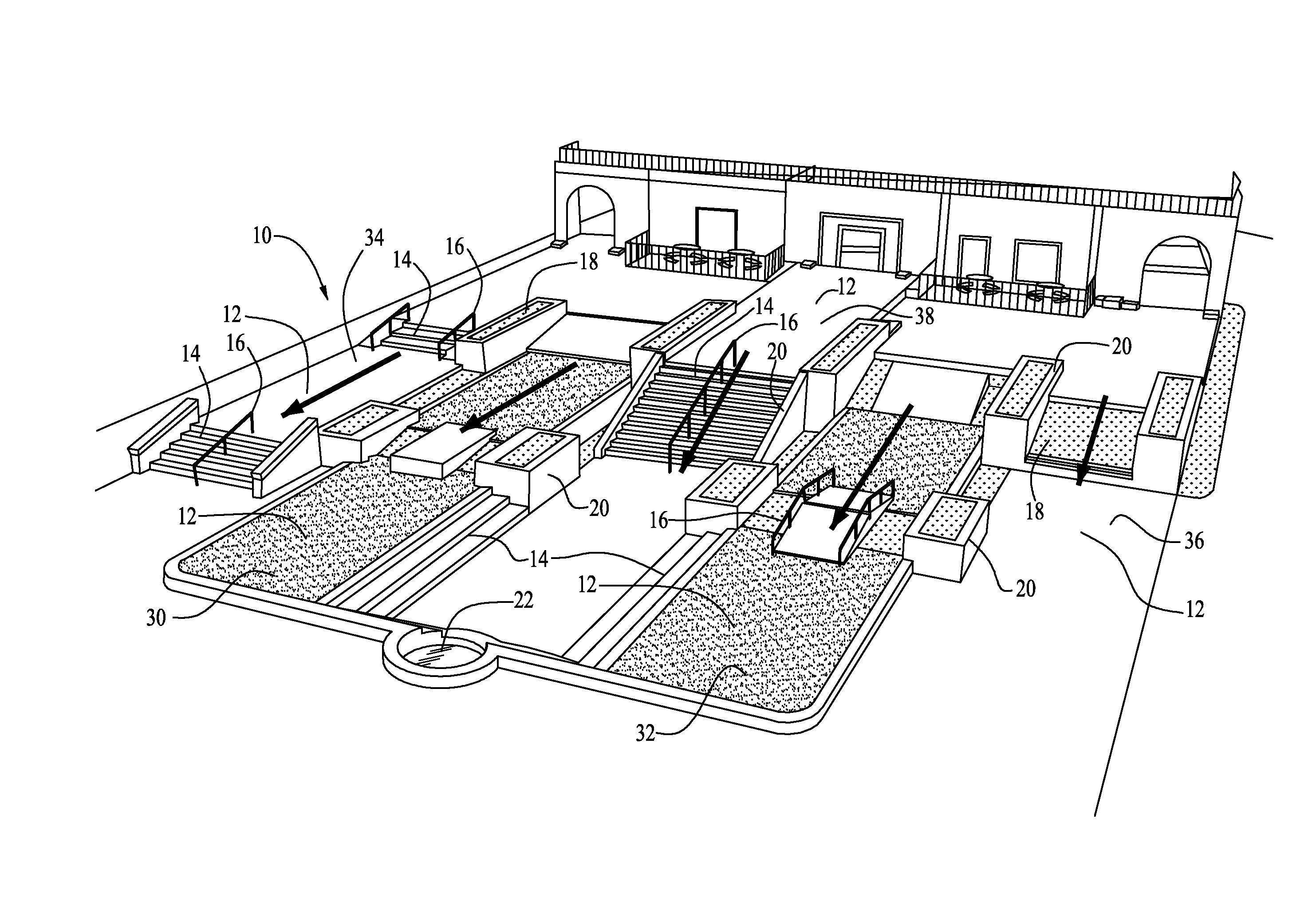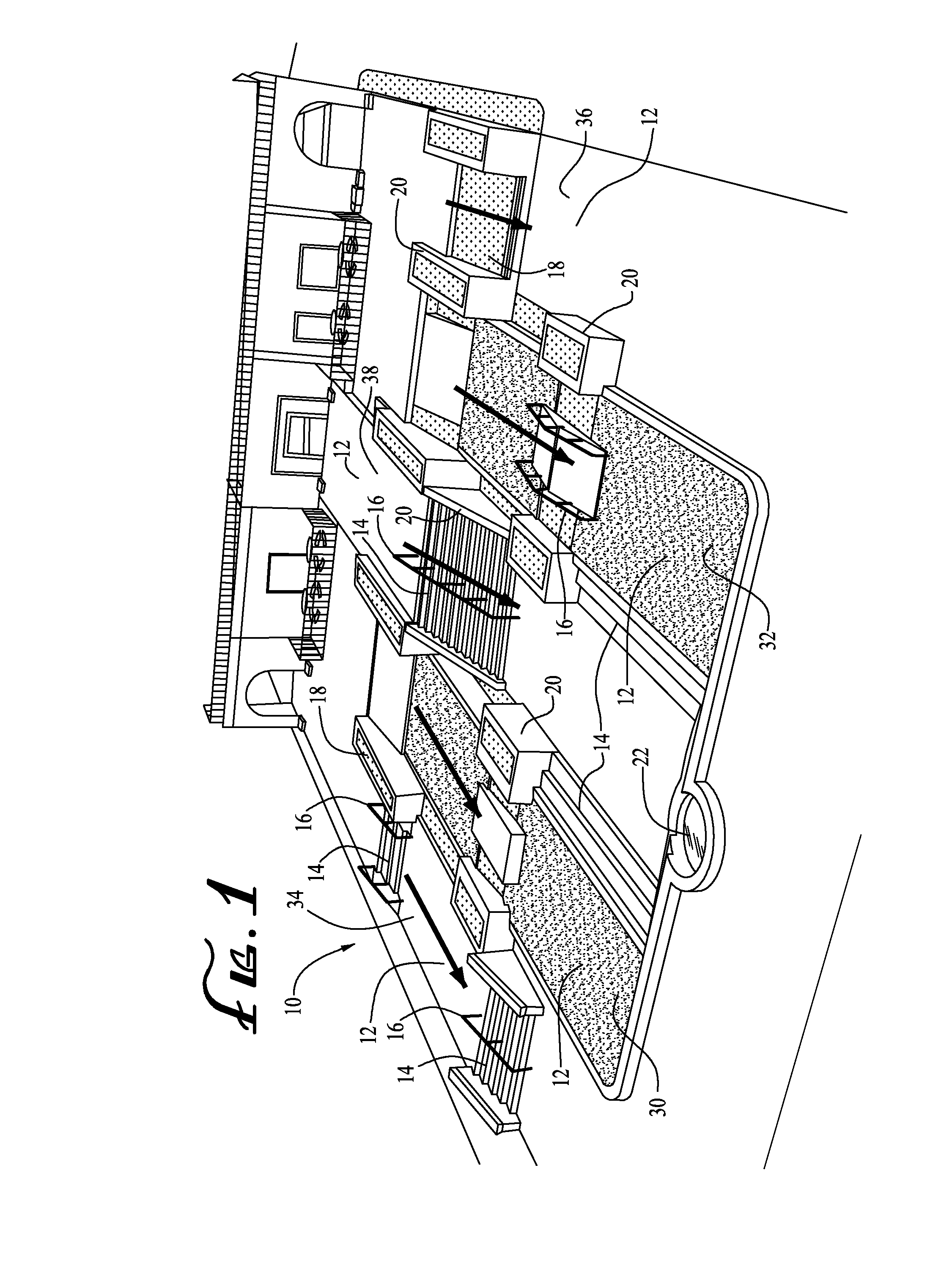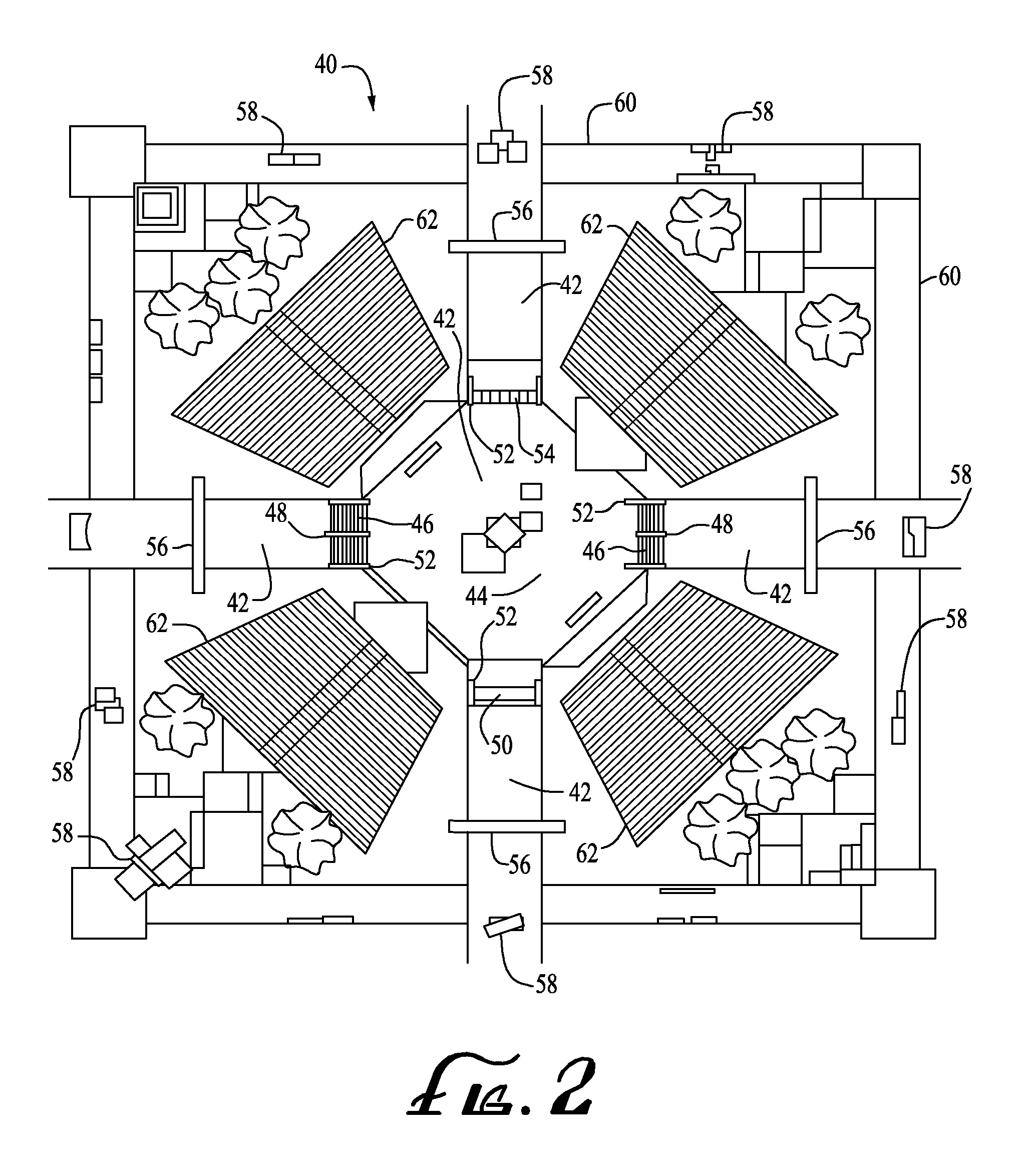Skateboard arena and method of competition
a technology of skating arena and competition format, applied in the field of skating arena, can solve the problems of lack of real-time scoring feedback, lack of understandable scoring system or performance statistics, and unorganized skating contests
- Summary
- Abstract
- Description
- Claims
- Application Information
AI Technical Summary
Benefits of technology
Problems solved by technology
Method used
Image
Examples
Embodiment Construction
[0028]The following description is provided to enable any person skilled in the art to make and use the invention and sets forth the best modes contemplated by the inventor of carrying out his invention. Various modifications, however, will remain readily apparent to those skilled in the art, since the general principles of the present invention have been defined herein specifically to provide a skateboarding competition arena and a method of competition. As seen in FIG. 1, an illustrative skateboarding competition skate plaza or arena 10 in accordance with an embodiment of the present invention includes a course 12 comprising a number of distinct competition lanes 12. Five (5) lanes 12 are illustrated with each lane 12 corresponding to a distinct, skateboarding skill level although the number of lanes 12 may vary. The arena 10 simulates a number of environments (e.g., a street corner environment; a corner park environment; the environment outside of an office building that includes...
PUM
 Login to View More
Login to View More Abstract
Description
Claims
Application Information
 Login to View More
Login to View More - R&D
- Intellectual Property
- Life Sciences
- Materials
- Tech Scout
- Unparalleled Data Quality
- Higher Quality Content
- 60% Fewer Hallucinations
Browse by: Latest US Patents, China's latest patents, Technical Efficacy Thesaurus, Application Domain, Technology Topic, Popular Technical Reports.
© 2025 PatSnap. All rights reserved.Legal|Privacy policy|Modern Slavery Act Transparency Statement|Sitemap|About US| Contact US: help@patsnap.com



